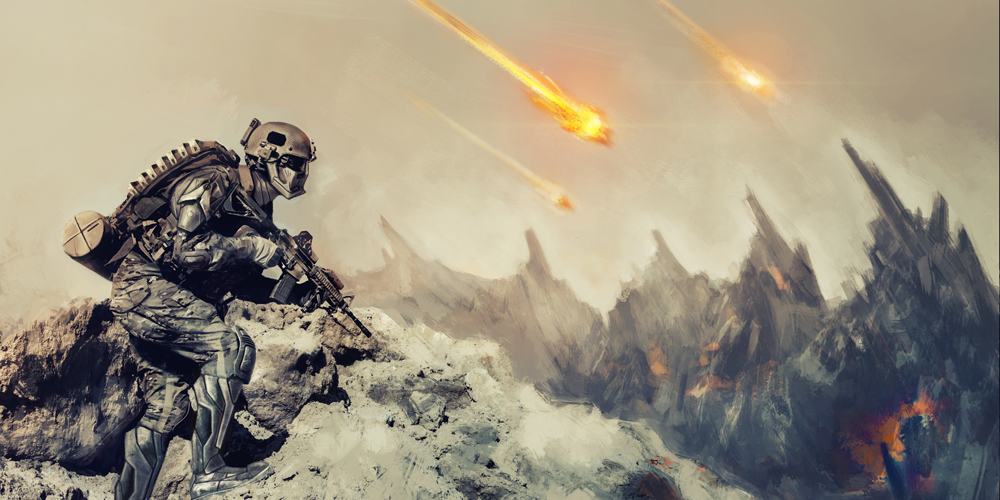
Our interview for the April – June Critical Thinking with Paul Scharre—he’s a Ranger vet who did tours in Iraq and Afghanistan who is now a robotics expert at the Center for a New American Security—covered so much good material, but we didn’t want to leave it on the cutting room floor. Here’s Scharre on how to manage a swarm.
Scharre: [You could see] area coverage in this way where there are super rules—like don’t get too close or too far away from other agents. And that uses a swarm of agents to cover an area. Those sort of work for all sorts of military problems, whether it’s reconnaissance or logistics or building an adaptive and resilient communications networks. And all of those things allow you to then do those tasks with very minimal human supervision. So someone is tasking the swarm to go do some mission or some task, but someone’s there micromanaging, which is where you want to go. You can have people flying vehicles or directing vehicles.
And there is a lot of really neat stuff happening inside companies, people doing experiments in DOD labs and in academic labs at universities, doing basic research in swarming. I just think this is an area of tremendous growth potential in both the military and the commercial sector for things like robot warehouse management or delivery or logistics. There’s a lot of potential here to harness some of this collective intelligence.

UNMANNED DISRUPTION
Small, expendable robots scattered behind enemy lines—like these off-the-shelf drones launch from White Sands Missile Range in September 2015, in preparation for Network Integration Evaluation 16.1—can be really disruptive to the enemy, according to Paul Scharre, a Ranger veteran who’s now a robotics expert at the Center for a New American Security. (Photo by John Hamilton)
Thirty years from now, that’s something where we know we can build autonomous systems, whether it’s an airplane or a ground vehicle, that can control the vehicle better than a human. It’s not possible today, but it’s going to be possible in the coming years. We want people to be at the mission level thinking about accomplishing the mission and then using robots to go out and perform discrete tasks in pursuit of that mission.
Army AL&T: Is there any particular reasoning or formula for how many different robots in a swarm that one person should have to control?
Scharre: That’s a very good question. It depends upon what tasking the person has to do, how much the swarm needs to report in. I want to differentiate between two paradigms: One is if you have a person directing the vehicles, so if you have something like a Global Hawk aircraft today, tell the aircraft where to go, and then it goes and then it waits for me to give it another task. So think of them checking in periodically for a person. Well, there are limits to how much you can scale that up. A person can only handle single-digit groups of individual elements.
And that’s not fundamentally much different than it is with people, like a fire team leader can manage three people underneath him or her, but can’t manage 20. You have to break that down into more subgroups. But if you send 15, the swarm as a single element, now that’s quite different, right? Then you can imagine you task a swarm and you don’t task individual elements. You tell a swarm of 50 or 100 or 1,000 elements, go forth and do this, and you’re just interfacing with the swarm as whole. You’re not tasking individual swarms. That’s the big paradigm shift.
And then it’s basically limitless [as to] how big it gets, because it doesn’t matter from the user perspective—you’re just dealing with the group, the same way you might think about little kids playing soccer. The ball goes over here, the mob follows the ball, a gaggle of little kids. It doesn’t really change the equation, right?
Army AL&T: Right, so it’s one unit of multiple parts. But they’re all similarly directed.
Scharre: That’s right. So when you think about that, like when you look at what the Air Force did with these air launch swarms, you’re not telling each drone where to go. You’re just telling the group where to go perform a task; you just tell the group, go over here and do this, do that.
So the enemy doesn’t know which robot has good communications with humans. And so think about the concept of the little groups of paratroopers in Normandy on D-Day running around behind enemy lines. Doing something like that with robotics—small, expendable robots scattered behind enemy lines, running around wreaking havoc like that—can be really disruptive to the enemy, because if they run across a robot scout they have to assume that they’ve been spotted. They need to kill the robot scout and they need to displace. There are concepts of operations that I think have some appeal that we ought to be experimenting with.
Read the full interview at http://usaasc.armyalt.com/#folio=90.
Subscribe to Army AL&T News, the premier online news source for the Acquisition, Logistics, and Technology (AL&T) Workforce.







